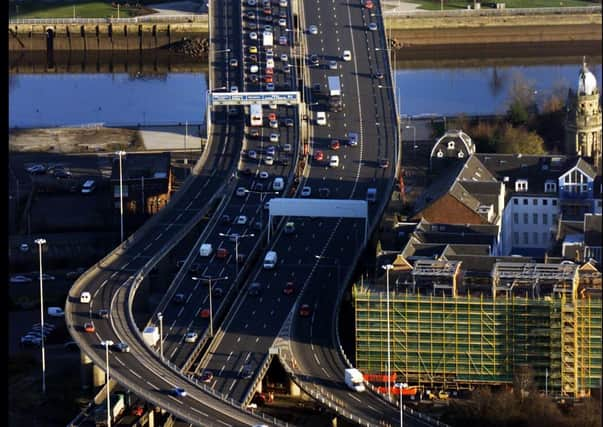Raise a glass to some great Scottish roads – John Yellowlees


The great natural anchorage of Scapa Flow had proved its worth in the Great War when blockships were sunk to seal its back entrances but, tragically, these proved insufficient to prevent Uboat 47 from getting in and sinking the battleship HMS Royal Oak on 14 October 1939, with the loss of over 830 of her crew.
Winston Churchill therefore ordered the building of four barriers linking the Orkney mainland with the small uninhabited islands of Lamb Holm and Glips Holm and the larger inhabited ones of Burray and South Ronaldsay to stop any craft from getting between them.
Advertisement
Hide AdAdvertisement
Hide AdThe official opening by First Lord of the Admiralty AV Alexander MP came four days after VE Day on 12 May 1945.


The barriers were built by noted Scottish engineering contractor Balfour Beatty, with initial work by civilian labour later supplemented by more than 1,000 Italian prisoners of war housed in camps on Lamb Holm and Burray, who have left a fantastic memorial in the form of the beautiful little chapel built out of two Nissen huts and designed by artist Domenico Chiocchetti.
A road unlikely ever to have been affordable in peacetime was built along the barriers, and over the years permanently changed life on Burray and South Ronaldsay, preserving a steady and solid population which would have been unlikely with only a ferry link.
Fast forward 25 years to the completion of a very different road crossing, the Kingston Bridge carrying the M8 across the Clyde, lynchpin of the Glasgow Motorway Network, scenes of whose construction are documented in the newly expanded Glasgow Motorway Archive.
These roads give Glasgow a more North American character than any other British city, and while parts of its postwar vision were never fulfilled as priority was switched to public transport projects including the Argyle Line, Subway modernisation and the Fastlink bus lanes, enough was built – including, 40 years later, the M74 Northern Extension – to deliver a US sense of scale and mobility.
The M8 decluttered, and – for a time, at least– decongested Glasgow, with multi-storey park-and-ride provision and the city-centre section built in a cutting to offset the severance inflicted elsewhere.
All this was before the arrival of modern concerns about air quality, climate change and inclusion that can perhaps best be addressed by retrofitting the network for electric vehicles, bus priority and active travel.
These engineering feats were creatures of their time, and perhaps the greatest symbol of ours, the COP26 conference in Glasgow due this November, will, ironically, benefit from the ease and security of movement that the Kingston Bridge helped provide.
Advertisement
Hide AdAdvertisement
Hide AdOther notable estuarial crossings in the years since the war have included the Forth (both of them) and Tay Road Bridges, the A9 Kessock, Cromarty and Dornoch Firths, the A82 at Ballachulish, the Erskine and Skye Bridges and, at Kylesku, a Grade A-listed design that carries the North Coast 500.
In the drive to decarbonise Scotland, however, a new balance must be struck, and eyebrows have been raised at the Scottish Government’s determination to press on with dualling, in the name of safety, the A9 from Perth and the A96 from Aberdeen to Inverness while the parallel railways remain largely single-track.
John Yellowlees, Scottish chair, CILT
Comments
Want to join the conversation? Please or to comment on this article.